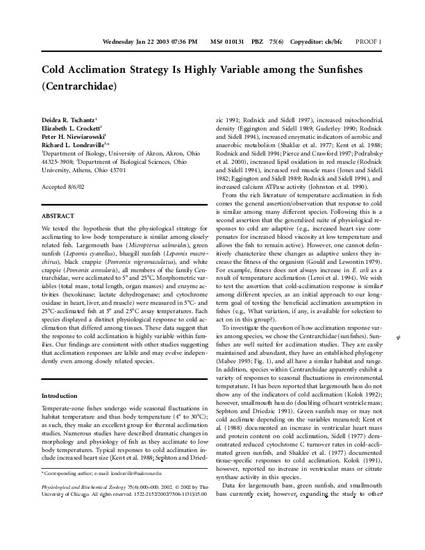
We tested the hypothesis that the physiological strategy for acclimating to low body temperature is similar among closely related fish. Largemouth bass (Micropterus salmoides), green sunfish (Lepomis cyanellus), bluegill sunfish (Lepomis macrochirus), black crappie (Pomonix nigromaculatus), and white crappie (Pomonix annularis), all members of the family Centrarchidae, were acclimated to 5degrees and 25degreesC. Morphometric variables (total mass, total length, organ masses) and enzyme activities (hexokinase; lactate dehydrogenase; and cytochrome oxidase in heart, liver, and muscle) were measured in 5degreesC- and 25degreesC- acclimated fish at 5degrees and 25degreesC assay temperatures. Each species displayed a distinct physiological response to cold acclimation that differed among tissues. These data suggest that the response to cold acclimation is highly variable within families. Our findings are consistent with other studies suggesting that acclimation responses are labile and may evolve independently even among closely related species.
Available at: http://works.bepress.com/peter_niewiarowski/1/
